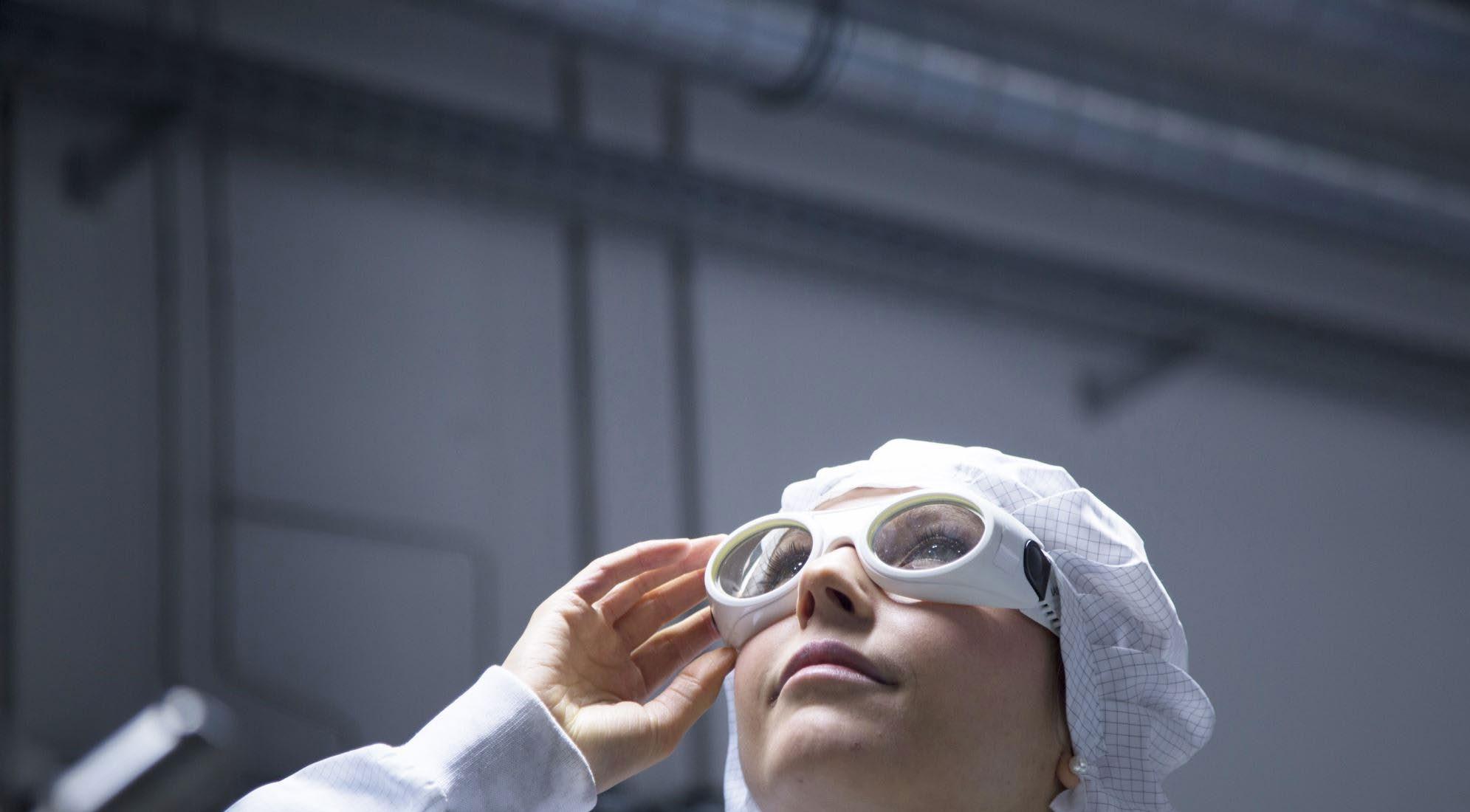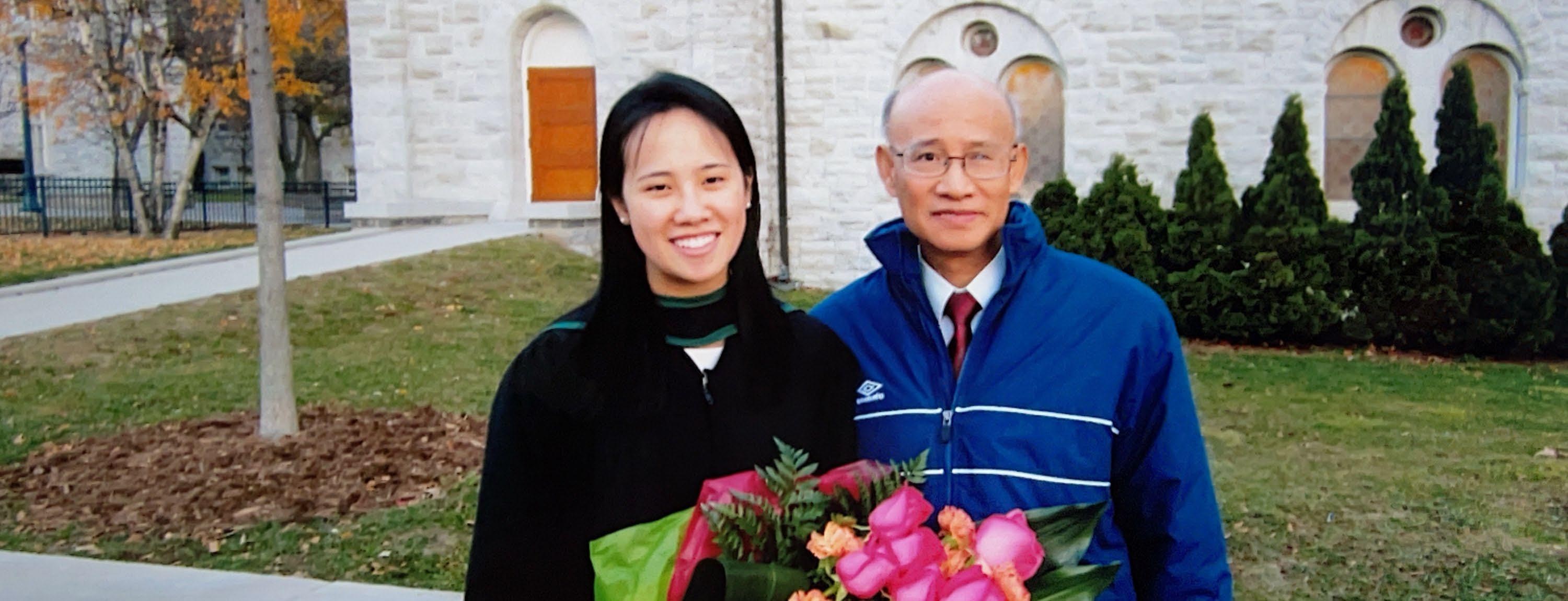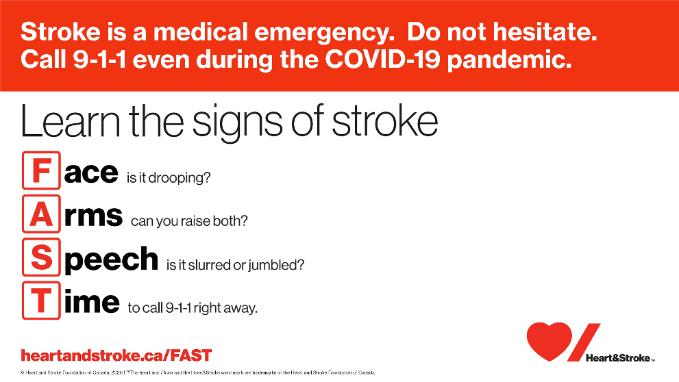Year in review



2022
Our vision: Life. Uninterrupted by heart disease and stroke.


Thanks to the thousands of people who support our work every single day, we are continuing to make a difference in the lives of people across the nation.
Together, we are helping more people make healthier choices, improving treatment and care for those impacted by heart disease and stroke, investing in breakthrough research, and transforming healthcare systems and policy. This report highlights our work and key successes in 2022 across our priority areas, including research, health equity (women’s heart and brain health and Indigenous health), stroke, cardiac arrest, heart failure, and prevention, as well as a few of the incredibly generous supporters, like you, who bring our mission to life.
Transforming heart and brain health research in Canada
Since 1952, Heart & Stroke has invested more than $1.6 billion in vital heart and brain research. From the prevention of disease to the development of life-saving interventions to the transformation of rehabilitation, our research is truly life-changing. Our 2022 highlights include:
$17.7M Invested in research awards (NIAs & GIAs)
64 Grants-in-Aids awarded
8 New Investigators awarded
Heart & Stroke’s research strategy is founded on a commitment to excellence.
We invest our donors’ dollars in the best science, as evaluated by competitive peer review. Heart & Stroke invests in research grants and awards to generate new knowledge, accelerate the translation of knowledge into action and support the next generation of leading heart and stroke researchers across Canada.

Highlights on research
• Heart Failure Research Network launched with partners including Canadian Cardiovascular Society, Canadian Heart Failure Society, Heartlife Foundation and others.
• Stroke Clinical Research Catalyst Grant launched in collaboration with Brain Canada and Canadian Stroke Consortium. This competition provides seed funding for research that generates new data.
3
Research in action
Transforming heart and brain health research in Canada
Reducing the impact of the coronavirus
Dr. Gavin Oudit, Heart & Stroke researcher, Calgary, AB

While the Covid-19 pandemic slowed or stalled progress on critical heart and brain health research, for Dr. Gavin Oudit, that has fortunately not been the case. In fact, his research lab has been busier than ever because of his pioneering work over many years on ACE2, a protein found on the surface of cells. His research, supported by Heart & Stroke donors, explores how ACE2 may be protective against heart and vascular disease in patients with obesity and type 2 diabetes.
Now it turns out that ACE2 acts as a receptor for the coronavirus to enter cells, causing Covid-19. Dr. Oudit quickly put his team’s expertise to work on the new problem. They discovered that elevated levels of ACE2 in blood plasma are a strong indicator of worse outcomes when someone has Covid-19. And they are working on possible therapies to reduce the impact of the virus.
As we push past the pandemic, support from our loyal donors will ensure, this critical and timely work will impact those who need it most.
4
Philanthropy in action

Dr. Anthony (Tony) Graham, OC Toronto, ON | Volunteer
He’s been credited with bringing CPR training to Canada, for helping launch the 911 emergency response system across the country, and for pioneering Heart & Stroke policy change during the tobacco wars of the 1990s. But for cardiologist Dr. Tony Graham OC, none of these milestones would have been reached without the backing and support of Heart & Stroke.
Indeed, the longtime volunteer has been front and center during a number of milestone moments for Heart & Stroke since he first started working with the organization in 1976, including its amalgamation into a national organization in 2012 and the adapting and innovating necessitated by the COVID-19 pandemic. In 2002 – largely because of his work with Heart & Stroke – he was named a Member of the Order of Canada.
Along the way Dr. Graham started raising money for the Heart & Stroke. He took up canvassing when the volunteer on his street passed away, but he quickly intuited that door-to-door fundraising

was not sustainable. An early adopter of online fundraising, he started his own campaigns using email lists comprised of friends, family, service providers and residents and alumni of his own neighborhood. Last year alone, he raised $84,000 for Heart & Stroke – with 50% of his prospect list answering the call to action.
After more than 45 years of service, Dr. Graham remains enthusiastically engaged with the Heart & Stroke mission. “I do this because it’s fun and it’s important,” he says. “As a volunteer you meet all kinds of interesting people from outside your sphere. I learn something new at every meeting or event I attend.”
But most importantly, he says, we are in the process of creating the next generation of cardiovascular care clinicians and scientists in Canada and building upon the significant progress that has already been enabled by Heart & Stroke. “Every leader in cardiovascular health in this country has been supported by Heart & Stroke at some point in their career,” he says. That’s why it’s important.”
5
Beat health inequity: Our work
We’re working hard to close health equity gaps in the areas of:
1. Women’s heart and brain health
2. Indigenous health

Women’s heart and brain health
At Heart & Stroke, we’ve embarked on an ambitious long-term plan to help transform the Canadian healthcare landscape for all women.
We are putting women’s health equity on the radar of all people in Canada so that every woman can get access to the support and care they need when it comes to their heart and brain health.
Women’s health highlights

• Global cardiovascular research: We launched an international initiative with 10 other leaders in cardiovascular health research that seeks to address women’s health and inequities.
• Launched the second phase of our Women's Initiative. Key areas of focus were selected, with an initial strategy to raise awareness among women and health care providers about the risk factors, signs and symptoms of heart disease, stroke and vascular cognitive impairment.
• The Awareness Pillar will be launched in early 2023, closely followed by the Research Pillar, which aims to grow the community of Researchers focused on Women's heart and brain health.
1 6
Women’s heart and brain health (Continued)
gestational hypertension. Women who experience these conditions are four times more likely to develop chronic blood pressure problems, 2.5 times more likely to develop heart disease and twice as likely to have a heart attack or die of heart disease.
Reducing women’s risk after pregnancy
Dr. Kara Nerenberg, Heart & Stroke researcher University of Calgary
Many women experience a high blood pressure disorder during pregnancy, making them two to five times more likely to have a heart attack or stroke before age 40, and to die prematurely before 60. Yet half of Canadian doctors aren't aware of this elevated risk, and so neither are their patients.
Dr. Kara Nerenberg wants to prevent outcomes like this by looking for cardiovascular warning signs earlier in women’s lives. In her research at the University of Calgary, she is zeroing in on pregnancy as an opportunity to assess

women’s risk factors and take steps to prevent a future heart attack or stroke. Why pregnancy? Dr. Nerenberg points to the high blood pressure disorders of pregnancy, including pre - eclampsia and
Using flaxseed to prevent heart failure
Dr. Davinder Jassal, Heart & Stroke researcher University of Manitoba
While the cancer drugs Doxorubicin and Trastuzumab may improve the long-term outcomes in women with breast cancer, these two drugs may also increase the risk of developing heart failure. Dr. Davinder Jassal is investigating how the use of flaxseed may be able to protect the heart and reduce the risk of developing heart failure in women administered either of these chemotherapy treatments. The results of this study have the potential to significantly improve heart health in women with breast cancer, in Canada, and throughout the world.

7 Research in action
Indigenous health
Canada's Indigenous peoples continuously demonstrate great strength and resilience, even in the face of health challenges that relentlessly test individuals, families, and communities.
Heart & Stroke committed to respond to the Truth and Reconciliation Commission’s (TRC's) calls to action, recognizing the current state of Indigenous health in Canada.
Indigenous health research highlights
• New Indigenous Health webpage to raise awareness about cardiovascular disease in Indigenous communities.
• HeartSmart KidsTM Launched our second Storytelling Series with two new videos and three new activities for National Indigenous Peoples Day. As of October 31, 1227 total educators and 44,012 students and families participated in the program.
• Investing in Indigenous investigators: Among multiple initiatives, we are developing a new personnel award program for Indigenous research trainees with the goal of increasing Indigenous representation in the research community. We have also partnered with Manitoba Riverside Health Center and 8 First Nations communities on a stroke recovery initiative.

2 8
Philanthropy in action
Allison Tse
Toronto, ON | Chair, Heart & Stroke Young Leaders Committee
Allison Tse has been waging a war against stroke since she was just four years old.

First, her dad suffered a massive stroke while in his early 40s. This left him with aphasia (the inability to speak), and limited use of the right side of his body. “Although it didn't take away his life, it took away something that so strongly defined him –his ability to communicate,” Allison says.
Then, at the age of 29, Allison herself suffered a minor stroke while on a bike ride with friends. “I was lucky to get to the hospital and receive a diagnosis right away,” she says. “But during my recovery process, I was shocked. I felt like I was in the prime of my life, and of all the illnesses in the world, I had succumbed to thisspecific one.”
At this point, Allison realized that her lived experiences had uniquely positioned her to spread awareness that stroke can happen to young people. She did some research and came across the Heart & Stroke Young Leaders Committee, a passionate group of young philanthropists dedicated to the success of Heart & Stroke research and outreach. “I loved what they were doing to connect young people to the cause, and I instantly knew that’s where I belonged.”
Allison says her time on the committee has been an incredible period of growth, learning and impact. “As a group, we've accomplished so much to bring young people together and further the Heart & Stroke mission,” she says. “Volunteering has given me a sense of enrichment and satisfaction that I haven't been able to find anywhere else in life.”
9
Philanthropy in action
Dr. Ted Semple
Truro, NS | Women’s Initiative & stroke research
Retired veterinarian and Nova Scotia Agricultural College instructor Ted Semple has a singular goal – to help improve outcomes for future generations of Canadians impacted by heart disease and stroke.
A large-animal veterinarian with a generous heart to match, Dr. Semple – like so many Heart & Stroke supporters – has a deep personal connection to our mission. He lost both his wife and his mother to a brain aneurism and he himself lives with heart disease, managed in part with a pacemaker.
“Ted’s passion to give back is fueled by the personal hardship heart disease and stroke has caused him and his family,” says Senior Philanthropy Officer Kristian Piraino. “He is doing everything he can to improve outcomes for future generations.”
Given his family history, Dr. Semple’s philanthropy is focused on women’s heart and brain health. His first gifts were directed to stroke research – in particular the groundbreaking research into women’s stroke outcomes conducted by Toronto neurologist Dr. Amy Wu. “I can’t even start to describe how important [Ted’s support] is to somebody like me, an early career researcher,” Dr. Yu says. “The support by donors to Heart & Stroke encourages me and inspires me and reminds me that the questions I’m aiming to answer are relevant to the people who are experiencing these conditions.”
Dr. Semple has made an additional commitment to support clinical research into women’s heart and brain health and also plans to make a legacy gift in his will.
“Ted makes his donations not just for the good of himself, his children, or his local community, but for allpeople in Canada,” says Kristian. He is truly an altruistic donor.”

10
Dr. Semple poses with students from the Nova Scotia Agricultural College in Truro, NS, where he was an instructor in the animal science and veterinary technician degree programs.
Improving stroke systems

When a stroke occurs, getting the right care fast is critical. We’re working to improve emergency response and treatment through systems change and public education.
30 years of leading and improving stroke systems of care.
Heart & Stroke has been a leader and collaborator in improving stroke systems of care and patient outcomes across Canada.
Highlights in stroke
FAST: Heart & Stroke established a total of 134 in-kind partnerships, enabling 473 million known impressions in 2022. This means that we were able to raise awareness of the signs of stroke to millions of people across Canada so that more people can act fast and call 9-1-1 in the event of a stroke.

Canadian Stroke Best Practices Recommendations (CSBPR): Heart & Stroke is setting the standard on optimizing patient care for people living with stroke.
We completed and published the 7th edition of the Virtual Stroke Rehabilitation module. The CSBPR website received 575,730 page views in 2022.

Beat stroke. Beat sudden devastation
11
Protecting the hearts of people across Canada
For more than 70 years Heart & Stroke has been singularly focused on improving emergency response systems and survival rates, while ensuring equitable access to care and optimal experiences for people living with heart disease. Over the last year our work has focused on:
1. Cardiac Arrest
2. Heart Failure
1
Cardiac arrest
From setting the gold standard for resuscitation training by developing nationally recognized guidelines, to developing an interactive virtual resuscitation module for schools and workplaces, to providing essential CPR and first aid training to hundreds of thousands of people across Canada, we aim to transform the national system of first response in the event of cardiac arrest.
Cardiac arrest highlights
Optimizing cardiac registries
• We have been working with partners to fund national cardiac arrest registries that would help track cardiac arrest incidence and AED maintenance and optimization.

Training by the numbers
• Our network of 8033 instructors trained almost 400,000 individuals to provide emergency care and first aid to Canadians.
New CardiacCrashTM program launched
• We filmed 4 interactive, made-in-Canada CardiacCrashTM, a hands -only CPR and AED skills experience for student classrooms and workplaces.
12
Heart failure
Heart & Stroke is a leader and catalyst in the development and implementation of an integrated, collaborative, and comprehensive heart failure system of care. In 2022, we continued to fund collaborative research to understand the underlying causes of heart failure and ways to optimize care.
Our 2022 heart failure highlights
A first-in-class database
• Heart & Stroke has been instrumental in creating an inventory of Canadian heart failure resources. Some 503 sites participated in data collection to create this one-of-a-kind inventory, including all hospitals with 300+ heart failure admissions per year.
Heart Month highlights

• We released the 2022 Spotlight on Heart Failure report
Heart Failure Research Network
• In May 2022, the new Canadian Heart Function Alliance was awarded a $5M joint research award from CIHR, Heart & Stroke, and Mitacs to optimize the management of heart failure along the continuum of care.
Heart Failure Action Plan
• An expanded national Heart Failure Advisory Committee was formed to create the Heart Failure Action Plan. The plan brings together people with lived experience of heart failure with some of Canada’s leading clinicians, researchers and policy-makers to identify gaps and opportunities to improve heart failure care.
Beat heart disease. Beat stroke.
2 13
Keeping families healthy across Canada
From policy that protects young people to raising awareness on the risks of heart disease and stroke, Heart & Stroke plays an important role in advancing health promotion strategy across the nation.
Highlights on prevention
In 2022, our focus has been on advocating for increased federal healthy eating policies and for increased vaping policy measures that protect youth and adults. Heart & Stroke also continued our efforts in risk reduction and behaviour change. Our successes include:
Tobacco & vaping policy
• Health Canada introduced health warnings directly on cigarettes, making Canada the first country in the world to do so.
• Several of our recommendations on vaping policy were adopted including:
• Saskatchewan introduced a 20% tax on vaping products
• Alberta and the Northwest Territories introduced a comprehensive ban on flavoured vaping products with no exemptions for mint/menthol
Healthy eating policy
• Front-of-pack nutrition labelling | Following many years of advocacy work, in June, the federal government adopted front-of-package nutrition labelling regulations that will warn consumers when products are high in sodium, sugars or saturated fats.
• Marketing to Kids | We joined the Stop Marketing to Kids coalition in requesting that the federal government restrict the marketing of unhealthy food and beverages to children. Health Canada subsequently released its forwardlooking regulatory plan which includes the introduction of food and beverage marketing to kids regulations.

14
Beat as one
Heart & Stroke made great progress in 2022 to bring our country closer to reducing disease occurrence and improving health outcomes and quality of life for people dealing with heart disease, stroke and vascular cognitive impairment – an effort that would not be possible without your partnership and commitment.
City by city, province by province, compassionate organizations and individuals like you are uniting to create a brighter, more equitable future for all people in Canada living with these conditions. We’re excited to continue this journey with you in 2023.
Thank you.

15
2022 | ™
© Heart and Stroke Foundation of Canada,
The heart and / Icon on its own and the heart and / Icon followed by another icon or words are trademarks of the Heart and Stroke Foundation of Canada.























